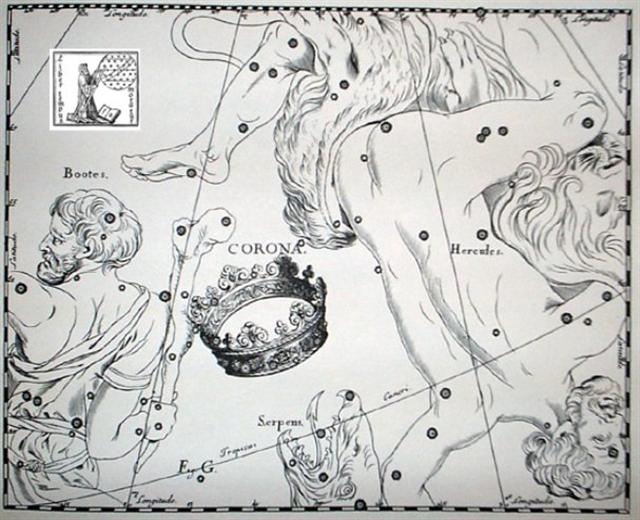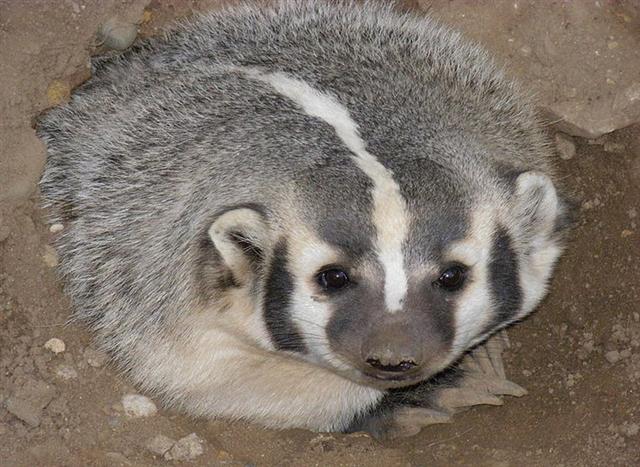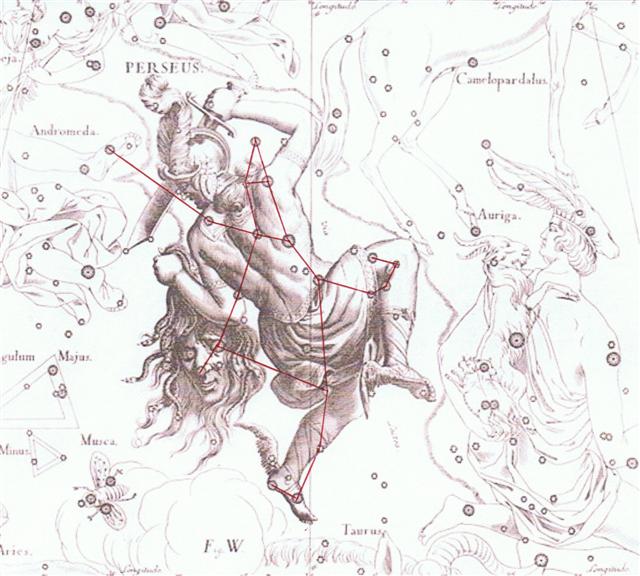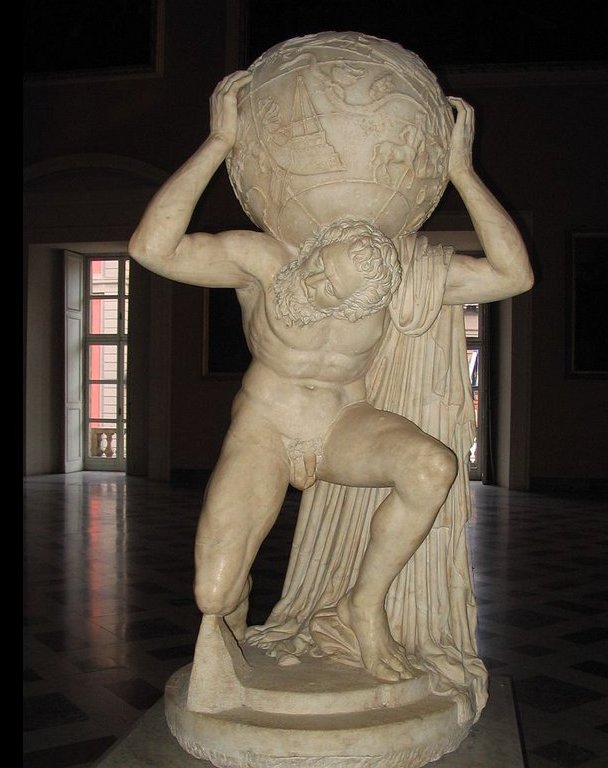Once again. The Greek μ (as in
Bayer's letter for Alkalurops) indicated the presence of water:
|
μ Lupi, γ
Tr. Austr. (231.3), ο Librae (231.8) |
ο Cor.
Borealis (232.0), δ Lupi (232.1), φ¹, ν² Lupi (232.2),
ν¹ Lupi (232.3), ε Lupi (232.4), φ² Lupi (232.5),
PHERKAD (The
Dim One of the Two Calves)
= γ Ursae
Min. (232.6), ε Librae (232.7), η Cor. Borealis (232.8),
υ Lupi (232.9) |
ALKALUROPS
(The Club) = μ Bootis
(233.1),
ED ASICH
= ι Draconis (233.2) |
 |
 |
 |
|
Cb1-22 |
Cb1-23 |
Cb1-24 (416
- 4 - 4 = 408) |
| ko te
rima |
kua oo
ki te vai |
ma te ua |
|
ZIBAL
= ζ Eridani (48.0), κ Ceti (48.9) |
τ Arietis (49.7) |
ALGENIB
PERSEI = α Persei
(50.0), ο Tauri (50.2), ξ Tauri (50.8)
GIENAH (γ
Corvi)
|
| Go
Pau.: goge, to break. Ma.:
ngongengonge, crippled. Churchill. Pau.:
gogo, the navel and cord. Mgv.: gogo,
id. 2. Mgv.: gogo, a conical hole. Ta.:
oo, a large cavity. Ha.: no, a
hole left to draw off water from taro patches.
3. Mgv.: gogo, thin cheeks, sunken eyes.
Ta.: tu-oo, wasted away. Ma.: ngongo,
emaciated. Churchill.
Sa.: ngongo, the tern (Sterna
longipennis). To., Niuē;
ngongo,
the sea gull. Futuna: ngŏngŏ,
the name of a bird. Vi.: ngongo,
a sea bird. Churchill 2. |
Allen:
"Inkalunis in some of the
Alphonsine Tables; Icalurus in those of 1521,
Incalurus in the 1515 Almagest, all supposed to be
bungled renderings of Ptolemy's Κολλορόβος,
itself probably a word of his own coining to designate
the position of the star in the club; Riccioli writing
it Colorrhobus.
But Ideler,
rejecting this, thought Schickard more correct in
deriving these words from έν
κολόυρω,
'in the colure', a statement that was nearly right as to
Arcturus 2000 years ago; the name since then, having in
some way, been transferred to this star
[μ Bootis], as
also to the constellation ..."



... Mons
Maenalus, at the feet of Boötes, was formed by
Hevelius, and published in his Firmamentum
Sobiescianum; this title coinciding with those of
neighboring stellar groups bearing Arcadian names. It is
sometimes, although incorrectly, given as Mons
Menelaus, - perhaps, as Smyth suggested, after the
Alexandrian astronomer referred to by Ptolemy and
Plutarch. The Germans know it as the Berg
Menalus; and the Italians as Menalo.
Landseer has a striking representation of the
Husbandsman, as he styles Boötes, with sickle and staff,
standing on this constellation figure. A possible
explanation of its origin may be found in what Hewitt
writes in his Essays on the Ruling Races of
Prehistoric Times:
The Sun-god
thence climbed up the mother-mountain of the Kushika
race as the constellation Hercules, who is depicted in
the old traditional pictorial astronomy as climbing
painfully up the hill to reach the constellation of the
Tortoise, now called Lyra, and thus attain the polar
star Vega, which was the polar star from 10000 to 8000
B.C.
May not this
modern companion constellation, Mons Maenalus, be from a
recollection of this early Hindu conception of our
Hercules transferred to the adjacent Bootes?
...

... In other
words, the ancient Druidic religion based on the
oak-cult will be swept away by Christianity and the door
- the god Llyr - will languish forgotten in the Castle
of Arianrhod, the Corona Borealis. This helps us
to understand the relationship at Rome of Janus and the
White Goddess Cardea who is ... the Goddess of Hinges
who came to Rome from Alba Longa. She was the hinge on
which the year swung - the ancient Latin, not the
Etruscan year - and her importance as such is recorded
in the Latin adjective cardinalis - as we say in
English 'of cardinal importance - which was also applied
to the four main winds; for winds were considered
as
under the sole direction of the Great Goddess until
Classical times ...
Once upon a time the
Oak Tree would have worked its magic to produce rain when spring
equinox was due. Diadem (α Coma Berenicis) was at
te honu paka (the dry turtle) and a vacant space
('Palace Chapel') was illustrated 18 nights after 0h (at glyph
384).

This would then have been in the day before the arrival of the Garment's Train (Adhil) of Andromeda
(when Spica together with Alcor were at the opposite side of the year). 71 Virginis (the first star in Mons
Maenalus) followed 80 Ursae Majoris
(the Fox, Alcor), i.e. followed the night when Sadalmelik (α
Aquarii) culminated.
And these 6 glyphs
were then completed by another set of 6 days in order to
let Polaris be at the end of side a of the tablet:
|
APAMI-ATSA (Child of Waters)
= θ Virginis, ψ Hydrae (198.5),
DIADEM = α Com. Ber.
(198.9) |
AL DAFĪRAH (Tuft)
= β Com. Ber. (199.4) |
σ Virginis (200.4) |
γ Hydrae (201.0), ι Centauri (201.4) |
Al Simāk-12 /
Chitra-14 /
Horn-1 (Crocodile) /
Sa-Sha-Shirū-20
(Virgin's
Girdle) /
ANA-ROTO-3
(Middle pillar)
MIZAR (Girdle)
= ζ Ursae Majoris (202.4),
SPICA = α VIRGINIS,
ALCOR = 80 URSAE MAJORIS
(202.7)
SADALMELIK (α Aquarii)
|
71 VIRGINIS
(203.6) |
 |
 |
 |
 |
 |
 |
|
*Ca14-18 |
*Ca14-19 |
*Ca14-20 |
*Ca14-21 (384) |
*Ca14-22 (11 * 35) |
*Ca14-23 |
|
te honu paka |
te henua |
honu kau |
te mata |
te honu |
kua heheu |
|
1h (15.2)
β
Phoenicis (15.1), υ Phoenicis, ι Tucanae
(15.6), η Ceti, ζ Phoenicis (15.7) |
Al Batn Al
Hūt-26 / Revati-28 / 1-iku
MIRACH (Girdle)
= β
Andromedae,
KEUN MAN MUN (Camp's South Gate)
= φ Andromedae (16.0),
ANUNITUM
= τ Piscium (16.5),
REVATI (Abundant)
= ζ
Piscium (16.9) |
ν Phoenicis
(17.4), κ Tucanae (17.6) |
no star listed
(18) |
ADHIL (Garment's Train)
= ξ Andromedae
(19.3), θ Ceti (19.7) |
KSORA (Knee)
= δ Cassiopeiae
(20.1), ω Andromedae (20.6), γ Phoenicis
(20.8) |
|
no star listed (204) |
HEZE
= ζ Virginis (205.0),
Southern Pinwheel Galaxy =
M83 Hydrae (205.7) |
ε Centauri (206.3), κ Oct.
(206.4) |
no star listed (207) |
τ Bootis (208.2),
BENETNASH (Leader of the
Daughters of the Bier)
= η Ursae Majoris (208.5), ν
Centauri (208.7), μ
Centauri, υ Bootis (208.8)is
(208.8) |
no star listed (209) |
 |
 |
 |
 |
 |
 |
|
*Ca14-24 > 336 |
*Ca14-25 > 350 |
*Ca14-26 > 364 |
*Ca14-27 > 378
|
*Ca14-28 > 392 |
*Ca14-29 (392) |
|
te henua |
te honu
kau |
manu kake
rua |
te henua |
te honu |
te rima |
|
δ Phoenicis (21.5) |
υ Andromedae (22.9) |
ACHERNAR (End of the River)
= α Eridani
(23.3), χ Andromedae (23.6),
τ Andromedae (23.9) |
ALSEIPH (Scimitar)
= φ Persei (24.5), τ Ceti
(24.7) |
no star listed (25) |
ANA-NIA-10
(Pillar-to-fish-by)
χ Ceti (26.1),
POLARIS = α Ursae Minoris,
BATEN KAITOS (Belly of the
Fish)
= ζ Ceti (26.6),
METALLAH
= α Trianguli (26.9) |
Although 4 more days (glyphs) had to be added because Gregory
XIII had moved the date for spring
equinox 4 days earlier in the year:
|
MUPHRID (Solitary Star)
= η Bootis (210.1), ζ
Centauri (210.3) |
φ Centauri (211.0), υ¹
Centauri (211.1), υ²
Centauri (211.8), τ
Virginis (211.9) |
AGENA (At the Knee)
= β Centauri (212.1), θ
Apodis (212.5),
THUBAN (Dragon) = α
Draconis
(212.8) |
14h (213.1)
π Hydrae, χ Centauri
(213.0),
MENKENT
= θ Centauri (213.1) |
 |
 |
 |
 |
|
Cb1-1 |
Cb1-2 |
Cb1-3 |
Cb1-4 (396) |
|
E tupu
- ki roto |
o te
hau tea |
ki te
henua - te maro |
|
Al Sharatain-1 /
Ashvini-1 / Bond-16
(Dog) /
Mahrū-sha-rishu-ku-1
(Front of the Head of
Ku)
SEGIN
= ε Cassiopeia,
MESARTHIM
= γ Arietis, ψ Phoenicis
(27.2),
SHERATAN
= β Arietis, φ Phoenicis
(27.4) |
ι Arietis (28.0), λ
Arietis (28.2), υ Ceti
(28.8) |
ALRISHA (The Knot) = α
Piscium,
χ Phoenicis (29.2),
ALAMAK (Caracal)
= γ Andromedae (29.7) |
Arku-sha-rishu-ku-2
(Back of the Head of Ku)
2h (30.4)
κ Arietis (30.3),
HAMAL = α Arietis
(30.5)
ALKES (α Crateris)
|
Beyond the Head
of Ku the Sun
would reach day *214 - alluding
to All Hearts' Day in February
14 - and this day was
followed by the Garment's
Train of Virgo (together with
Arcturus 'in the colure'):
|
Neck-2 (Dragon)
ASELLUS TERTIUS
= κ Bootis,
κ VIRGINIS,
14 Bootis (214.8) |
Al Ghafr-13 /
Svāti-15 /
TAHUA-TAATA-METUA-TE-TUPU-MAVAE-6
(a pillar to stand by)
15 Bootis (215.2),
ARCTURUS = α Bootis
(215.4),
ASELLUS SECUNDUS
= ι Bootis (215.5),
SYRMA (Garment's Train)
= ι Virginis, λ Bootis
(215.6), η Apodis
(215.8) |
ι Lupi, 18 Bootis
(216.3),
KHAMBALIA
(Crooked-clawed)
= λ Virginis (216.4), υ
Virginis (216.5), ψ
Centauri (216.6), ε
Apodis (216.8) |
 |
 |
 |
|
Cb1-5 |
Cb1-6 (398 = 390 + 4 +
4) |
Cb1-7 |
|
rutua |
te
pahu |
rutua
te maeva |
|
η Arietis (31.9) |
ξ¹ Ceti (32.1) |
θ Arietis (33.3),
MIRA
= ο Ceti (33.7) |
|
σ Bootis (220.2), η
Centauri (220.4) |
 |
|
Cb1-11 (403) |
|
ka
higa te ao ko te
henua ra ma te hoi
atua |
|
ν Ceti (37.9) |
And a further week later
the Sun
would reach the Claws (Al
Zubānā), at the time when
the Full Moon was at
Bharani:

|
Al Zubānā-14a
/
Visakha-16 /
Root-3 (Badger)
ZUBEN ELGENUBI
(Southern Claw) = α
Librae
(224.2), ξ Bootis, ο
Lupi (224.5) |
KOCHAB (Kakkab
= Star)
= β Ursae Min.
(225.0), ξ Librae
(225.7) |
KE KWAN (Cavalry
Officer)
= β Lupi (226.3),
KE KWAN
= κ Centauri
(226.4),
ZUBEN ELAKRIBI
(Scorpion's Claw?)
= δ Librae (226.8),
π¹ Oct. (226.9) |
 |
 |
 |
|
Cb1-15 |
Cb1-16 (408 = 400 +
4 + 4) |
Cb1-17 |
|
e
niu tu |
ki
te ariki - e ka hua
ra tona rima |
koia kua iri i ruga
o te rima - e o to
vaha mea |
|
Bharani-2 /
Stomach-17
(Pheasant)
π Arietis (41.2),
MIRAM (Announcer?)
= η Persei (41.3),
BHARANI (Bearer) =
41 Arietis (41.4),
τ² Eridani, σ
Arietis (41.7) |
TA LING (Great
Mound)
= τ Persei (42.4) |
ρ Arietis (43.0),
GORGONEA SECUNDA
= π Persei (43.5),
ACAMAR
= θ Eridani (43.6),
ε Arietis (43.7), λ
Ceti (43.9)
|
|
ω Bootis (227.2), NEKKAR (Herdsman) = β Bootis (227.3), σ Librae (227.5), π² Oct. (227.7), NADLAT (Low little ones) = ψ Bootis (227.8), π Lupi (227.9)
|
15h (228.3)
ZUBEN HAKRABIM (Scorpion's Claw) = ν Librae (228.3), λ Lupi (228.9) |
 |
 |
| Cb1-18 |
Cb1-19 (411 - 4 - 4 = 403) |
| manu moe ra |
ki to mata |
| MENKAR (Nose) = α Ceti (44.7) |
3h (45.7)
GORGONEA TERTIA = ρ Persei (45.1), ALGOL (Blinking Head of the Demon) = β Persei (45.9) |
| ω Oct. (229.3), ι Librae (229.6), κ Lupi (229.7), ζ Lupi (229.8) |
Al Zubānā-14b
χ Bootis (230.3), PRINCEPS (Leader) = δ Bootis (230.6), ZUBEN ELSCHEMALI (Northern Claw) = β Librae (230.8) |
 |
 |
| Cb1-20 |
Cb1-21 (413 = 354 + 59) |
| e nuku mata |
hoea |
| ι Persei (46.1), MISAM (Next to the Pleiades) = κ Persei (46.2), GORGONEA QUARTA = ω Persei (46.7), BOTEIN (Pair of Bellies) = δ Arietis (46.9) |
ζ Arietis (47.7) |
| *FEBRUARY 27 |
28 (59 = 2 * 29½) |
| 'April 9 |
10 (100) |
| °May 2 |
3 (123) |
| May 6 |
7 (127 = 59 + 68) |
And
then
came
'the
Flood':
| μ Lupi, γ Tr. Austr. (231.3), ο Librae (231.8) |
ο Cor. Borealis (232.0), δ Lupi (232.1), φ¹, ν² Lupi (232.2), ν¹ Lupi (232.3), ε Lupi (232.4), φ² Lupi (232.5), PHERKAD (The Dim One of the Two Calves) = γ Ursae Min. (232.6), ε Librae (232.7), η Cor. Borealis (232.8), υ Lupi (232.9) |
ALKALUROPS (The Club) = μ Bootis (233.1), ED ASICH = ι Draconis (233.2) |
 |
 |
 |
| Cb1-22 |
Cb1-23 |
Cb1-24 (416 - 4 - 4 = 408) |
| ko te rima |
kua oo ki te vai |
ma te ua |
| ZIBAL = ζ Eridani (48.0), κ Ceti (48.9) |
τ Arietis (49.7) |
ALGENIB PERSEI = α Persei (50.0), ο Tauri (50.2), ξ Tauri (50.8)
GIENAH (γ Corvi)
|
Alkalurops
was
at
the
Sun
when
Gienah
(the
thirsty
Raven)
culminated
at
the
other
side
of
the
year.
A
new
cycle
should
begin
after
the spring
rains
(te
ua):
|
NUSAKAN
= β Cor. Bor. (234.0), κ¹
Apodis (234.3), ν Bootis
(234.7), ζ Librae (234.9) |
θ Cor. Borealis (235.3), γ
Lupi (235.6),
GEMMA = α Cor. Bor.,
ZUBEN ELAKRAB
= γ Librae,
QIN
= δ Serpentis, ε Tr. Austr.
(235.7), μ Cor. Borealis
(235.8), υ Librae (235.9)
SIRRAH (α Andromedae)
|
φ Bootis
(236.2), ω Lupi, τ Librae
(236.3), ψ¹ Lupi (236.7), ζ
Cor. Borealis (236.9) |
 |
 |
 |
|
Cb2-1 (417 = 4 + 14 * 29½) |
Cb2-2 (26) |
Cb2-3 |
|
Eaha te
honu kua tupu |
i to
maitaki - o te hau tea |
te hono
huki - maro |
|
σ Persei (51.6) |
no star listed (52) |
ψ Persei (53.1)
ACRUX (α CRUCIS)
|
From Diadem to Gemma
there were *235 - *198 = 37 days,
which happened to be 4 days less
than the distance from 0h to
Bharani. Although counted from the Julian
equinox to Bharani the distance
was the same.
From heliacal Polaris
(Hawaiian Hoku-paa) to Acrux
(Hawaiian Newe) culminating
in the night there were 419 - 392 =
24 + 3 = 27 days. And to Porrima
culminating in the night there were
27 + 4 = 31 days:
|
κ Librae (237.2), ι
Serpentis (237.4), ψ² Lupi, ρ Oct. (237.5), γ Cor. Borealis, η Librae
(237.7), COR
SERPENTIS = α Serpentis
(237.9) |
π Cor. Borealis,
UNUK ELHAIA (Necks of the
Serpents) = λ
Serpentis (238.1),
CHOW = β Serpentis
(238.6) |
κ Serpentis (239.3), δ Cor.
Borealis, TIĀNRŪ
= μ Serpentis (239.5), χ Lupi, (239.6), ω Serpentis (239.7), BA = ε
Serpentis, χ Herculis (239.8). κ Cor. Borealis, ρ Serpentis (239.9) |
λ Librae (240.0), β Tr.
Austr. (240.3), κ Tr. Austr. (240.4), ρ Scorpii (240.8) |
 |
 |
 |
 |
| Cb2-4
(420) |
Cb2-5 |
Cb2-6 (30) |
Cb2-7 |
| te ua |
koia ra |
kua tuku ki to mata -
ki tona tukuga |
e kiore - henua - pa
rei |
|
δ Persei (54.7) |
Al Thurayya-27 /
Krittikā-3 |
MENKHIB (Next to the
Pleiades) = ζ Persei (57.6)
PORRIMA (γ Virginis)
|
| TAU-ONO
(Six Stones)
ATIKS
= ο Persei, RANA
(Frog)
= δ Eridani (55.1),
CELAENO
(16 Tauri), ELECTRA
(17), TAYGETA
(19), ν Persei (55.3),
MAIA
(20), ASTEROPE
(21), MEROPE
(23) (55.6) |
Temennu-3 (Foundation Stone)
Hairy Head-18 (Cockerel)
ALCYONE
(56.1), PLEIONE
(28 Tauri), ATLAS
(27) (56.3) |
There were 11 days
from Misam (Next to the Pleiades, κ
Persei) to Menkhib (Next to the
Pleiades, ζ Persei). Hevelius has
put Misam as the star above the
Algol eye, in the shadow at left on
the torso of Perseus, and Menkhib as the star
on his left foot (in front of
ο at
his heel):

"It
[Bootes]
has
been
Lycaon,
the
father,
or
grandfather,
of
Kallisto,
when
that
nymph
was
identified
with
Ursa
Major;
as
well
as
Arcas,
her
son;
Ovid
distinctly
asserting
in
the
2d
of
the
Fasti
that
Arctophylax
in
the
skies
was
the
earthly
Arcas,
although
it
is
often
wrongly
supposed
that
the
latter
is
represented
by
Ursa
Minor;
it
was
Septentrio,
from
its
nearness
to
the
north,
so
taking
one
of
the
Bear's
titles;
and
Atlas,
because,
near
to
the
pole,
it
sustained
the
world."
(Allen)

...
The
turtle
got
up,
went
back
into
the
(sea)
water,
and
swam
away.
All
the
kinsmen
spoke
to
you
(i.e.
Kuukuu):
'Even
you
did
not
prevail
against
the
turtle!'
They
put
the
injured
Kuukuu
on a
stretcher
and
carried
him
inland.
They
prepared
a
soft
bed
for
him
in
the
cave
and
let
him
rest
there.
They
stayed
there,
rested,
and
lamented
the
severely
injured
Kuukuu.
Kuukuu
said,
'Promise
me,
my
friends,
that
you
will
not
abandon
me!'
They
all
replied,
'We
could
never
abandon
you!' They
stayed
there
twenty-seven
days
in
Oromanga.
Everytime
Kuukuu
asked,
'Where
are
you,
friends?'
they
immediately
replied
in
one
voice,
'Here
we
are!'
They
all
sat
down
and
thought.
They
had
an
idea
and
Ira
spoke,
'Hey,
you!
Bring
the
round
stones
(from
the
shore)
and
pile
them
into
six
heaps
of
stones!'
One
of
the
youths
said
to
Ira,
'Why
do
we
want
heaps
of
stone?'
Ira
replied,
'So
that
we
can
all
ask
the
stones
to
do
something.'
They
took
(the
material)
for
the
stone
heaps
(pipi
horeko)
and
piled
up
six
heaps
of
stone
at
the
outer
edge
of
the
cave.
Then
they
all
said
to
the
stone
heaps,
'Whenever
he
calls,
whenever
he
calls
for
us,
let
your
voices
rush
(to
him)
instead
of
the
six
(of
us)
(i.e.,
the
six
stone
heaps
are
supposed
to
be
substitutes
for
the
youths).
They
all
drew
back
to
profit
(from
the
deception)
(?
ki
honui)
and
listened.
A
short
while
later,
Kuukuu
called.
As
soon
as
he
had
asked,
'Where
are
you?'
the
voices
of
the
stone
heaps
replied,
'Here
we
are!'
All
(the
youths)
said,
'Hey,
you!
That
was
well
done!'
...
|
































